Crowning achievements in piping and pipe bands for coronations of UK monarchs
By Jeannie Campbell MBE
In the days before radio and television, those who were interested in a coronation would have to wait for news until it appeared in the newspapers. Therefore, events to celebrate the coronation could be held on the actual day of the coronation.
Possibly there were Highland gatherings to celebrate the coronations of the early Kings of Scots, but none have been recorded.
In more modern times, there are no reports of Highland gatherings in connection with Queen Victoria’s coronation on June 28, 1838, although the members of the Northern Meeting held a Coronation Ball in the Northern Meeting Rooms that evening. This was before Victoria discovered her love of piping, and from that time onwards pipers became associated with the sovereign.
The coronation of Edward VII was arranged for June 26, 1902. A special Highland gathering was planned and was advertised during May and June in several papers:
Coronation Festivities. Great Highland Gathering. To be Held at Hunter’s Bog, King’s Park, Edinburgh on Saturday, 26th June, at 2 o’clock. Programme to consist of Pipe Playing, Dancing, High Leaping, Pole Vaulting, Running, Putting Heavy Stone, Hammer Throwing, Tossing the Caber and other events. There is a limited number of reserved Seats.
An address for ticket applications followed. The location Hunter’s Bog is in the valley between Salisbury Crag and Arthur’s Seat. On June 20th, the papers reported:
Arrangements for the Highland gathering to be held in the Hunters’ Bog on Thursday, are now well forward. The committee, over which Mr James Maitland, WS, presides, have received a highly satisfactory number of entries. The programme to consist of pipe-playing (including pipe-band competition), dancing, high leaping, pole-vaulting, putting the stone, hammer throwing tossing the caber, wrestling (Scottish style), tug-of-war (open to teams eight) and a hill race on Arthur’s Seat. For pipe playing 15 names are entered. These comprise the best of our Scottish and local pipers, including Center, Inverness; Macrae, Callander; McColl, Oban; McDougall Gillies, Glasgow; and Pipe Major Dunbar. Pibroch playing to commence at 11 o clock.
On the afternoon of June 24th, it was announced that the King was seriously ill and the newspapers on June 25th carried the news that the Coronation had been postponed. So, too, was the Highland Gathering in Edinburgh. The papers reported:
The Highland Games Committee decided yesterday afternoon to indefinitely postpone the games in Hunter’s Bog on Saturday afternoon, and the competitors, many of whom would have to travel long distances to Edinburgh, have been notified of this decision.
The King underwent an operation for appendicitis and on his recovery, the coronation was re-scheduled, but the Highland Gathering was not.
Two tunes were composed for the coronation, “King Edward’s Coronation,” a strathspey, by William Hume, and “King Edward’s Coronation,” a reel also by William Hume. Both were published in David Glen’s Edinburgh Collection Part 6.
George V was crowned on Thursday, June 22, 1911. In Edinburgh there was a special Coronation Highland Gathering promoted by Edinburgh Corporation and held in Saughton Hall Park on Coronation Day June 22nd. The event began at 11 am and did not finish until 6 pm and the spectators numbered more than 5,000. There were piping and dancing competitions plus all the usual events. The first prize for piobaireachd was a coronation silver medal and £5. In addition, there were four prizes in each event, plus a March, Strathspey & Reel for boys under 16. Entry fees were 1 shilling for adults and six-pence for juveniles to cover all events. The piping judges were Colin Cameron, piper to the Duke of Fife, and Lieutenant John McLennan, formerly Edinburgh Police and the father of G.S. McLennan.
The newspapers reported that it proved very successful but would have been even more enjoyable had the weather conditions been a little less stormy:
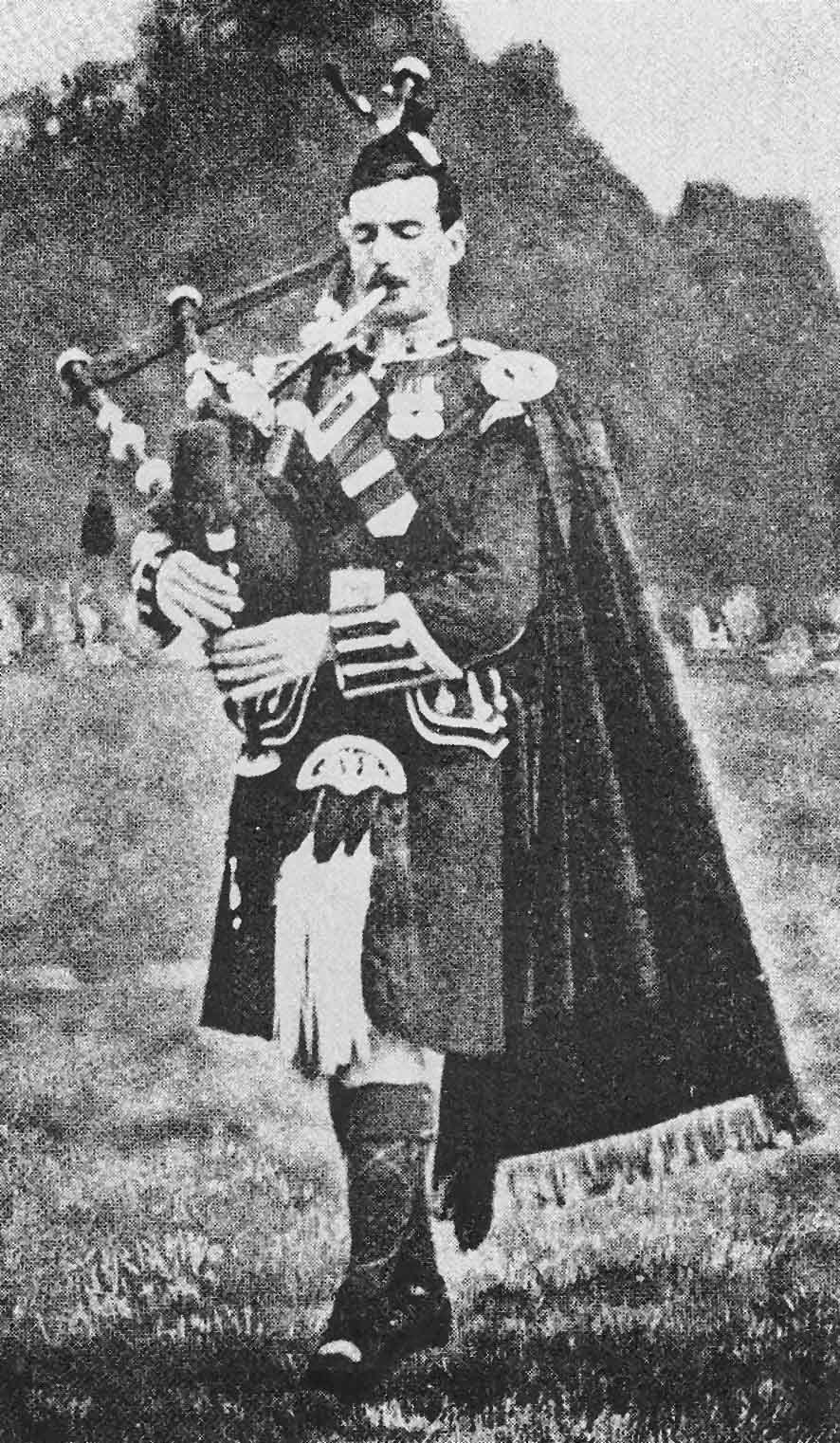
There was a strong wind blowing in wild gusts and at one point in the afternoon there was a heavy rain storm with thunder. It made conditions difficult especially for the pipers and dancers on the raised platforms who had difficulty keeping their balance. The results were, Piobaireachd: 1. Medal and £ 5, Pipe Major John MacDougall Gillies, 5th HLI, Glasgow; 2. £3, Pipe Major A Mathieson, Glencorse; 3. £ 2, A R MacColl, Oban; 4. £1, Roderick Campbell, Derby. Marches: 1. £3, A R MacColl, Oban; 2. £2, PM A Mathieson, Glencorse; 3. £1, J C Henderson, Loanhead; 4. 10s, Pipe Corporal R Sutherland, HLI, Hamilton. Strathspey and Reel: Medal and £3, PM A Mathieson. March Strathspey and Reel, boys under 16: Four Medals. 1. John Mackay, Glasgow; 2. Arnott McIvor, Edinburgh; 3. A P Ireland, Glasgow; 4. William Brown, Broxburn.
That evening the Edinburgh Heather Club, headed by the Abbeyhill and District Pipe Band, marched to the top of Arthur’s Seat and then drank to the health of the King and Queen. Not an easy march for a pipe band and I doubt if any present day band would wish to do this!
In May 1911, London newspapers announced:
Whitsuntide Highland Sports. The London Highland Athletic Club are holding a special Coronation Scottish gathering at Stamford Bridge Sports Ground on Whit Monday, June 5th 1911, under AAA laws. All Scottish sports are included in the programme, and the leading professional pipers and dancers from Scotland will compete. The club also includes in its programme the final shinty match for the Dewar Shield. There is also a wrestling championship, tug-of-war, throwing the hammer, putting the stone, tossing the caber, walking and running races, &c. The profits from this gathering are to be divided between these two excellent charitable institutions, the Royal Scottish Corporation and the Royal Caledonian Asylum. Tickets and entry forms can be had from the hon. secretary, J E Boyes, 15 Whitefriars Street, EC.
Advertising added that “A Military Band and Pipers will be in attendance. Admission to the Gathering, 6d; To Grounds and Enclosure, 1s. To Ground and Unreserved Stand, 2s. Reserved and Numbered, 3s.6d and 5s.”
Unlike the Edinburgh Gathering, the London Gathering was favoured with brilliant weather:
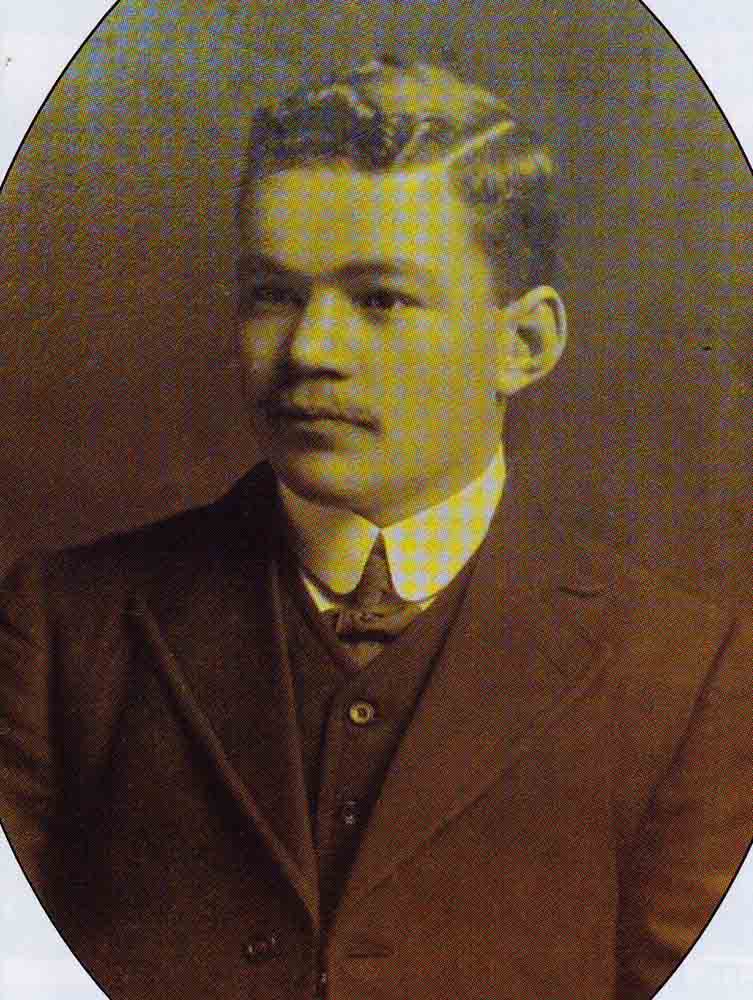
The dancing and piping of the boys of the Caledonian School were very prominent features of keenly contested items of a purely Highland character. As had been the case at previous gatherings organized by this club, there were events for amateurs and club
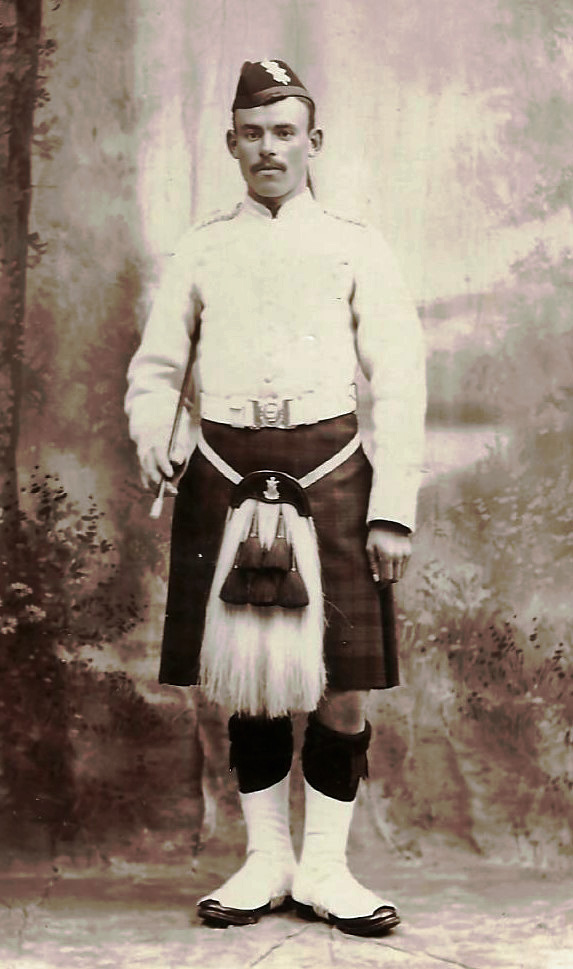
members in piping and dancing as well as for professionals. The results of these events were: Piping, Marches: 1. M B McDonald, Kenmore; 2. Gordon Gillies, Caledonian School. Strathspeys and Reels: 1. M B McDonald, 2. W D MacKay. Dancing. Highland Fling: 1. F L Narramore, 2. D G MacLeod. Seann Triubhais: 1. F L Narramore, 2. D G MacLeod. Strathspeys and Reels: 1. F L Narramore, 2. D G MacLeod. Gillie Callum: 1. A Finlayson, 2. H Davidson. Strathspeys and Reels: Ian R MacLeod, 2. M Ross. Piping. Professionals. Piobaireachd: 1. Pipe Major W Ross, 2nd Scots Guards; 2. Pipe Major G S MacLennan, Gordons. Marches, Strathspeys and Reels: 1. PM G S MacLennan. Strathspeys and Reels. 1. Piper Michael MacPhee. Dancing, Professionals. Strathspeys and Reels: 1. PM MacLennan, 2. PM Ross. Highland Fling: 1. Michael MacPhee, Piper to Lord Bute; 2. PM Taylor. Gillie Callum: 1. Piper M MacPhee, 2. PM MacLennan. At the close of the gathering Lady Helen Stuart Murray presented the prizes. Michael MacPhee was a great uncle of present day piper Donald MacPhee.
George V was crowned on May 12, 1937. This date had been planned as the coronation of his elder brother Edward VIII, but his abdication caused a change of plan. By this time coverage would have been available on the radio, or “the wireless” as it was then. No
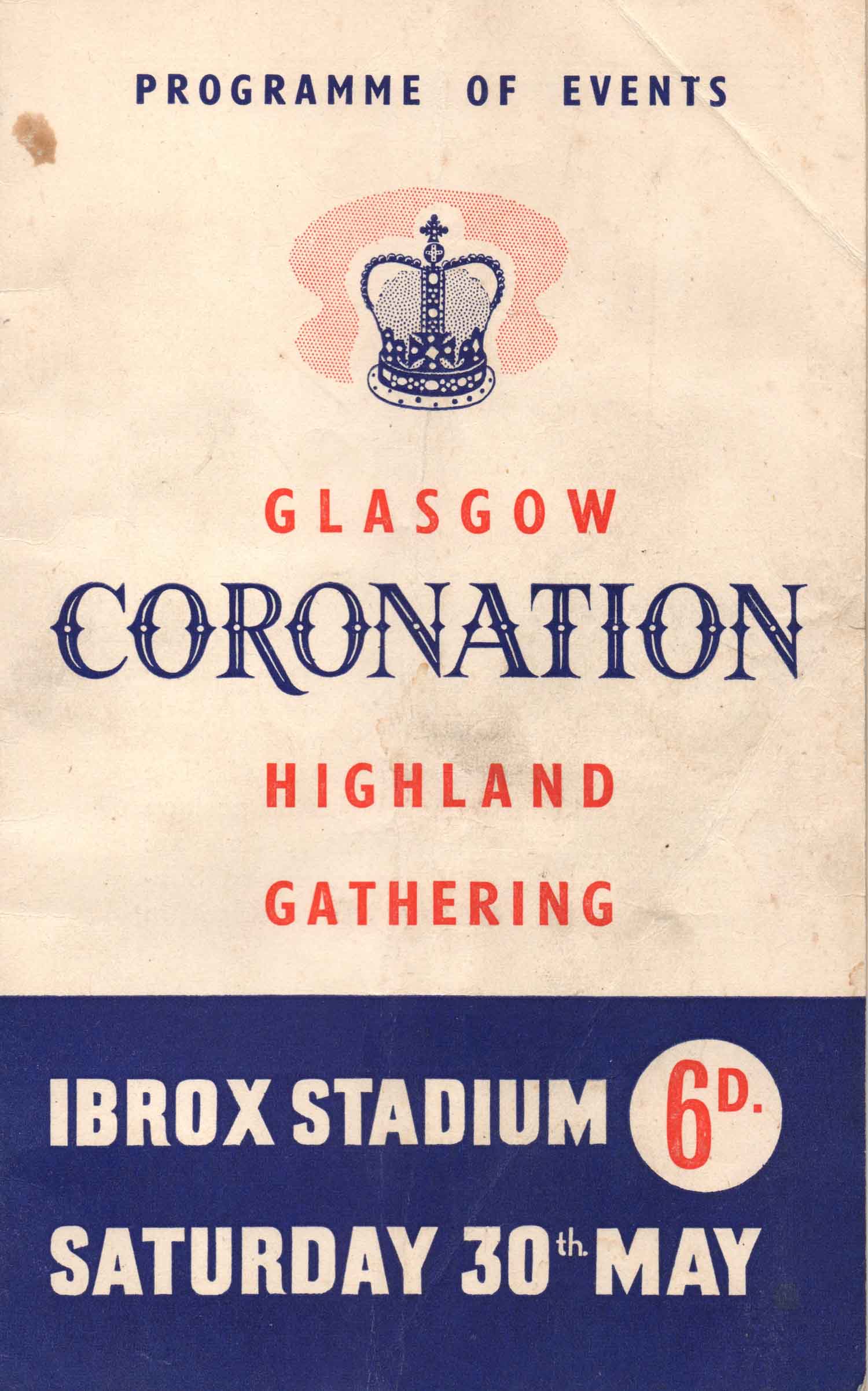
reports of Highland gatherings have been found but a tune was composed for him, “The Coronation March 1937” by Pipe-Major Andrew Kirk, published in The Black Watch Collection.
The contest had a unique form. Instead of the usual March, Strathspey & Reel, there was only one event in which each band played its own original Coronation march, specially composed for the occasion.
Queen Elizabeth II’s coronation was on June 2, 1953, and was the first to be televised. The main piping event was the Coronation Gathering held on May 30, 1953, at Ibrox Stadium in Glasgow. The Chieftain for the day was Captain Charles A Hepburn. The contest had a unique form. Instead of the usual March, Strathspey & Reel, there was only one event in which each band played its own original Coronation march, specially composed for the occasion. The winning tune was to be named “Salute to Her Majesty.” The judges were under cover. Forty bands took part and they can be seen in the program here, with the names of the pipe-majors and the composers. In several cases the tune had been composed by the pipe-major, but some bands were playing tunes composed by others, including some well known composers of the time.
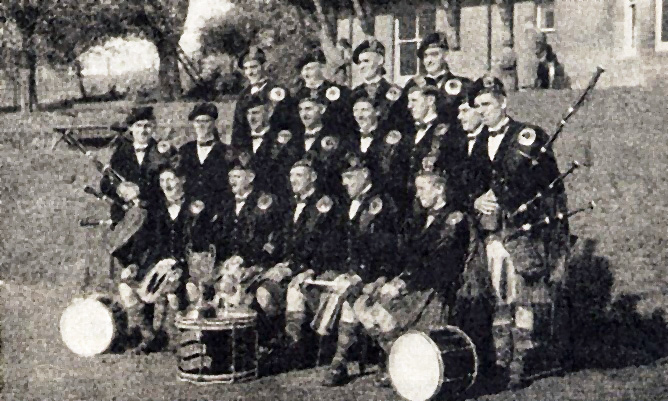
The winners were Dalzell Highland playing a tune composed by their Pipe-Major, David Ross. It was named “Salute to Her Majesty,” and was published in Volume 2 of the SPBA Tutor and Textbook. The second prize went to Airdrie Highland, Pipe-Major John Murray, playing a composition of William Bryson, a friend of Pipe-Major Murray. The name of Bryson’s tune was not reported, but perhaps it was named for his friend, the pipe-major of the band that had played it. A march named “J. Cameron Murray” by William Bryson was published in book three of The Edcath Collection.
Liverpool also had a special event. Newspapers reported:
Brilliant sunshine favoured the Coronation Highland gathering of the Lancashire and Cheshire Federation at Scott’s sports ground, Netherton. There were nearly 2,000 spectators when the gathering began. The 38 societies of the Federation were competing for the Challenge Rose Bowl presented by Mr and Mrs P Colligan of Wallasey to the society gaining most points in all events during the afternoon. Over 50 events were organised by Mr Hannah, chieftain and honorary secretary and his committee.
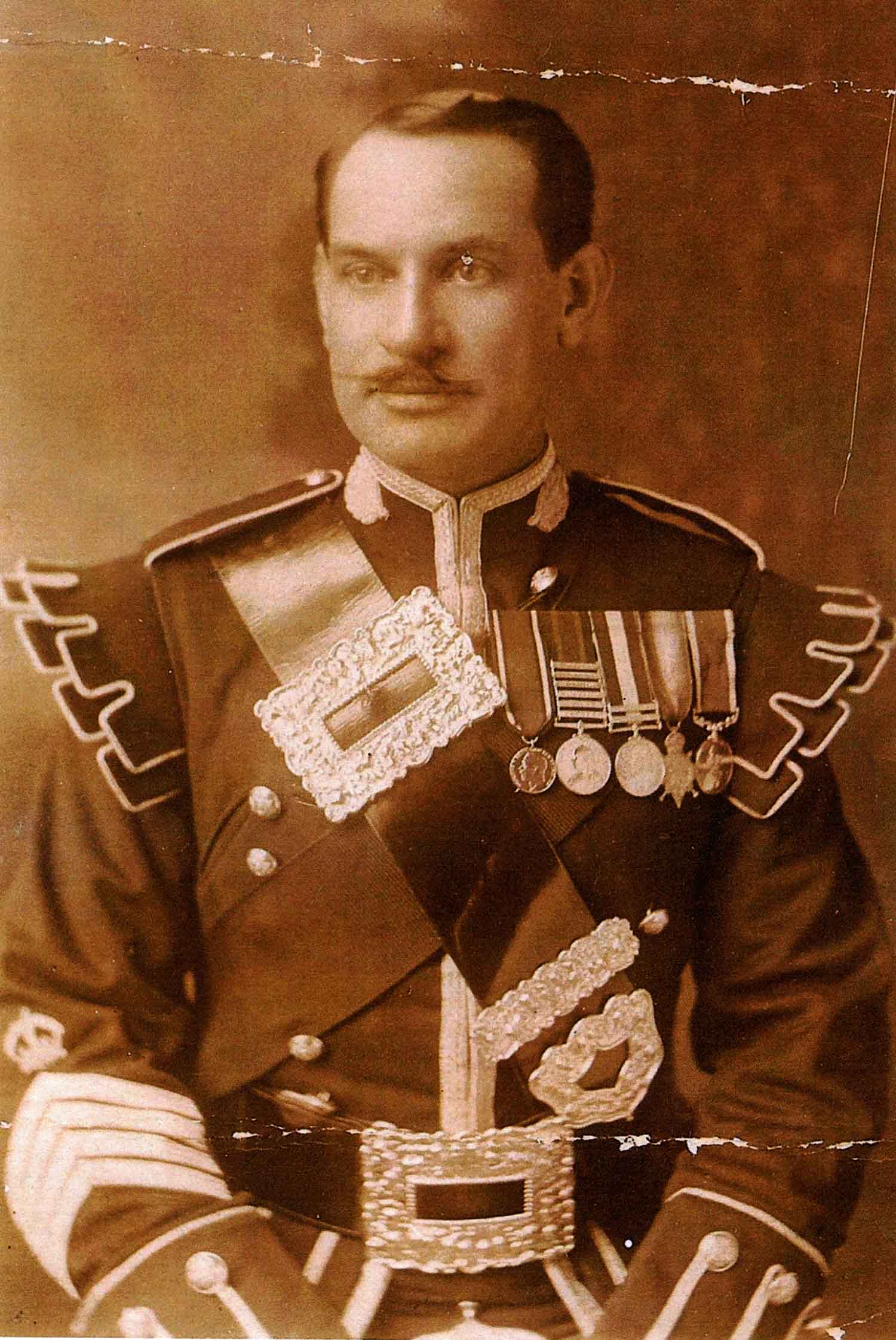
These included track and field events together with traditional highland dancing, solo piping, and a pipe band contest between the Prince Charles Edward pipe band, the Clan MacLeod pipe band and the Rose Fletcher pipe band. ‘Following a picturesque massed parade of the pipe bands in full highland dress, the gathering was addressed by the president. Major James Burnie MC.
The overall winners were West Derby Caledonian Society. The winners of the piping and pipe band contest were not reported.
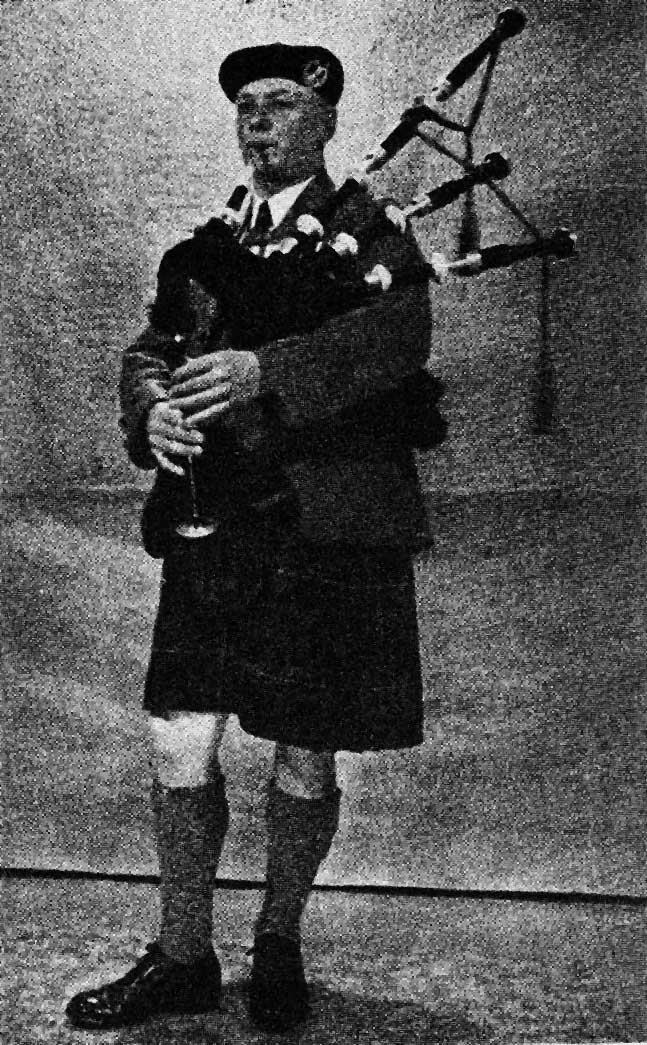
Also composed for the Queen were two other tunes, “The Coronation of Queen Elizabeth,” by Pipe-Major William Ross, published in The Scots Guards Collection Volume I, and “The Coronation Hornpipe,” by Pipe-Major James Robertson, Gordon Highlanders, published in The Gordon Highlanders Collection Volume I.
For the coronation of King Charles III, Stuart Liddell has composed a new tune named, “Amor Terrae Nostrae.” Whether there will be any pipers or pipe bands in the coronation processions remains to be seen.
Jeannie Campbell has written Highland Bagpipe Makers and More Highland Bagpipe Makers, two excellent books on bagpipe makers, and was made a Member of the British Empire in 2014 for her pioneering work and service to piping. She recently wrote and published Pipe Bands, an 850-page history of competing pipe bands of the last 150 years. Her most recent work is the colossal 850-page boon, Pipe Bands, published in 2021 and already in its second printing.

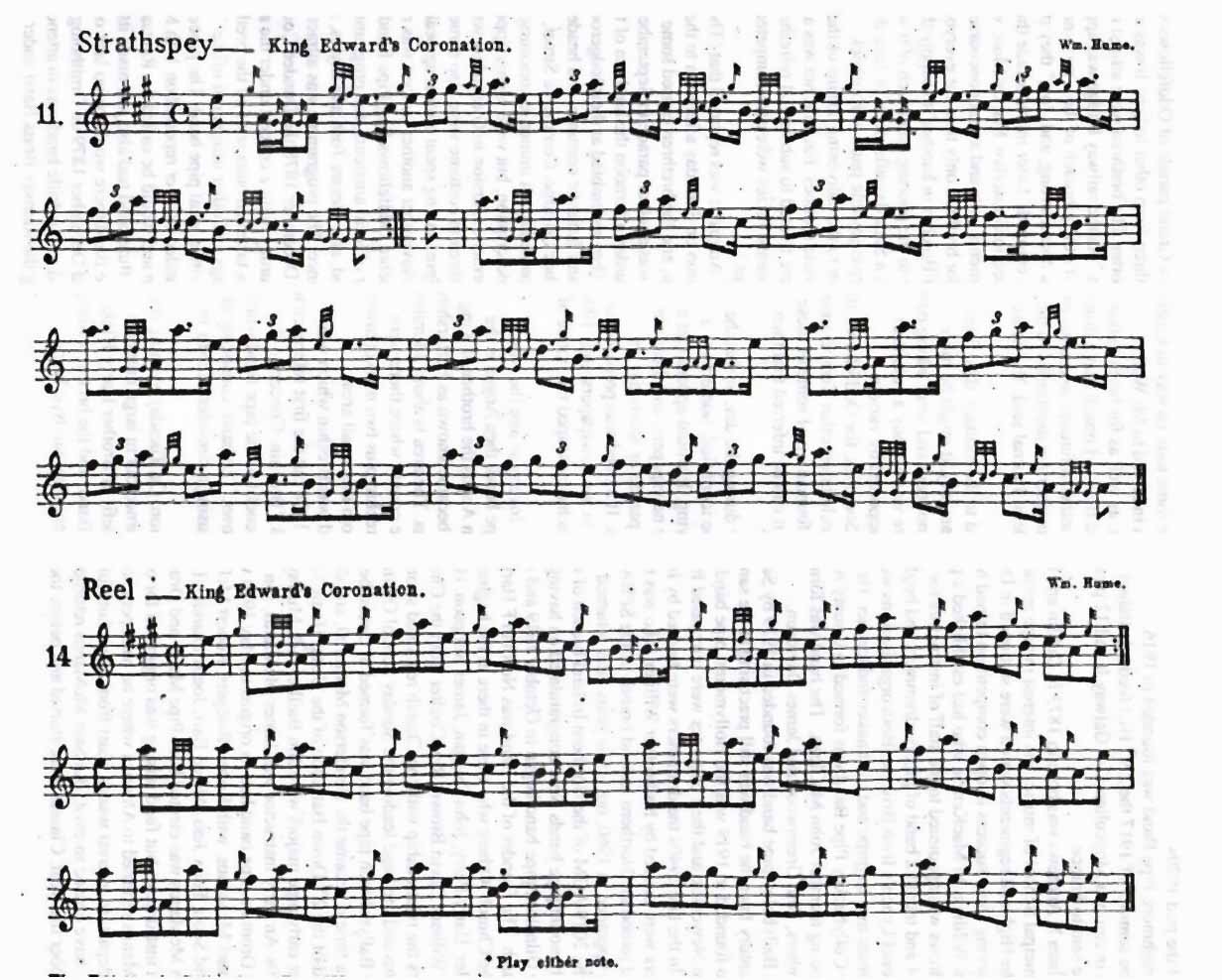

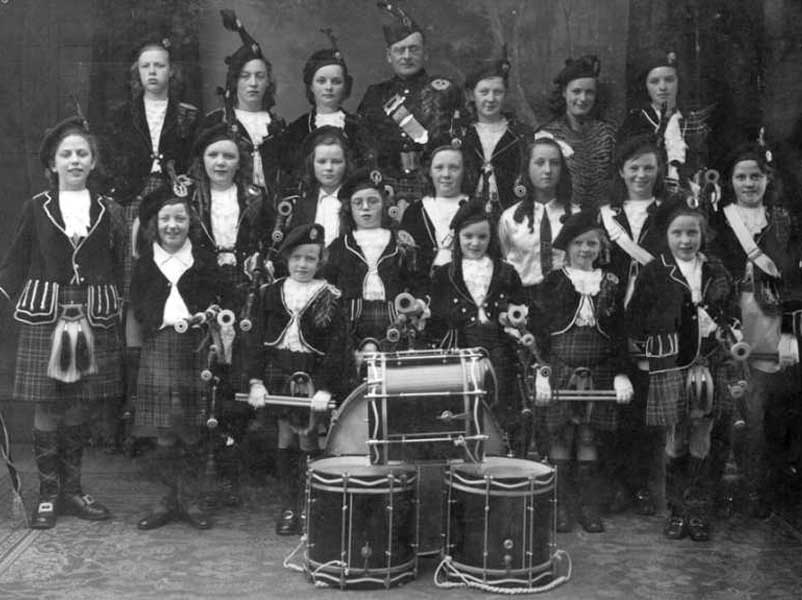
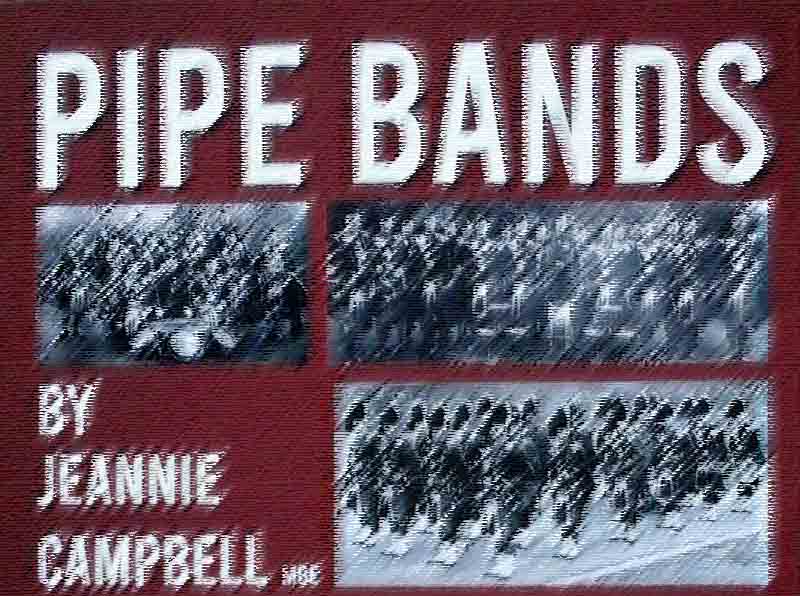
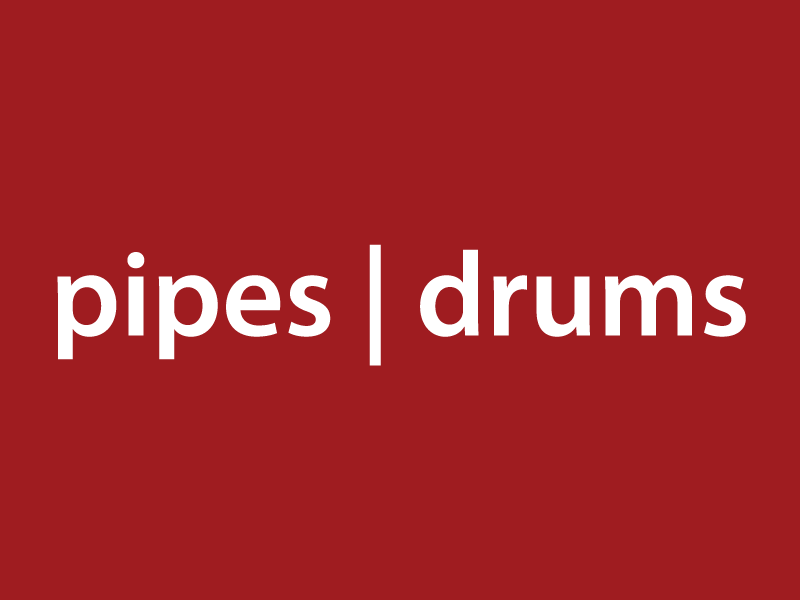
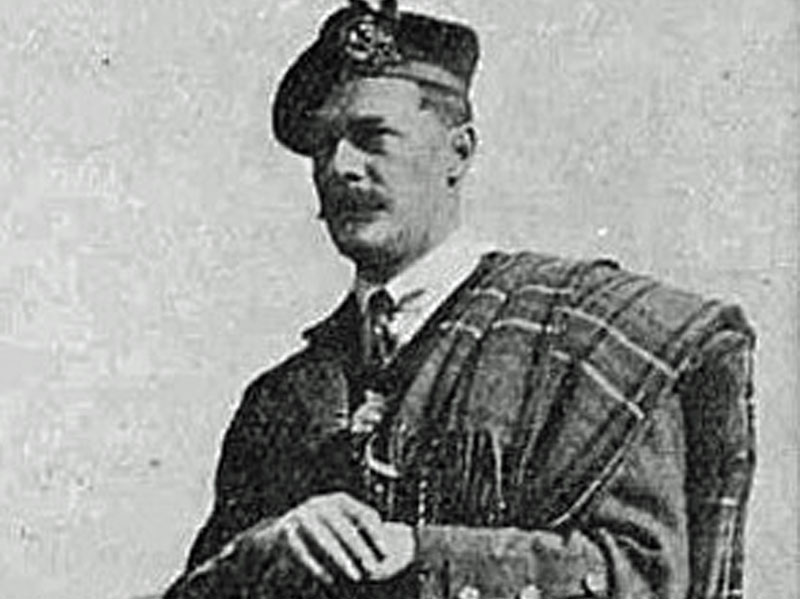

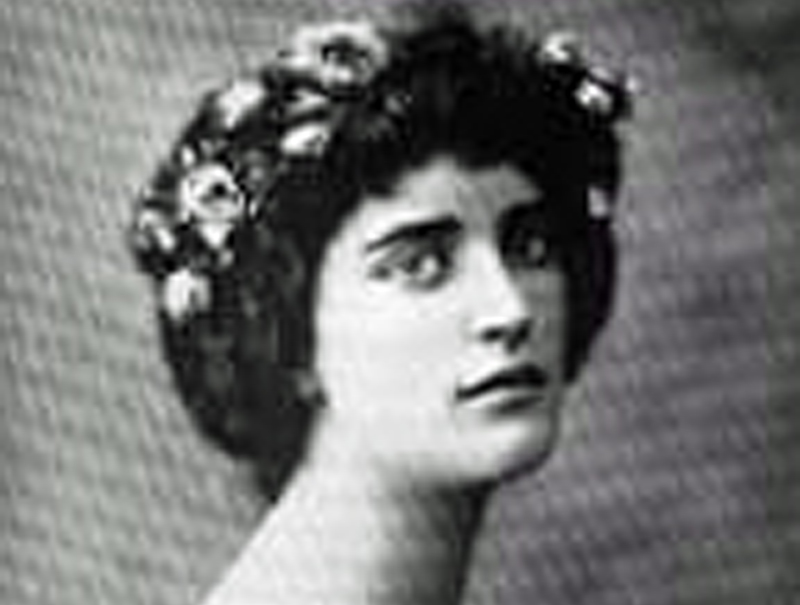
NO COMMENTS YET